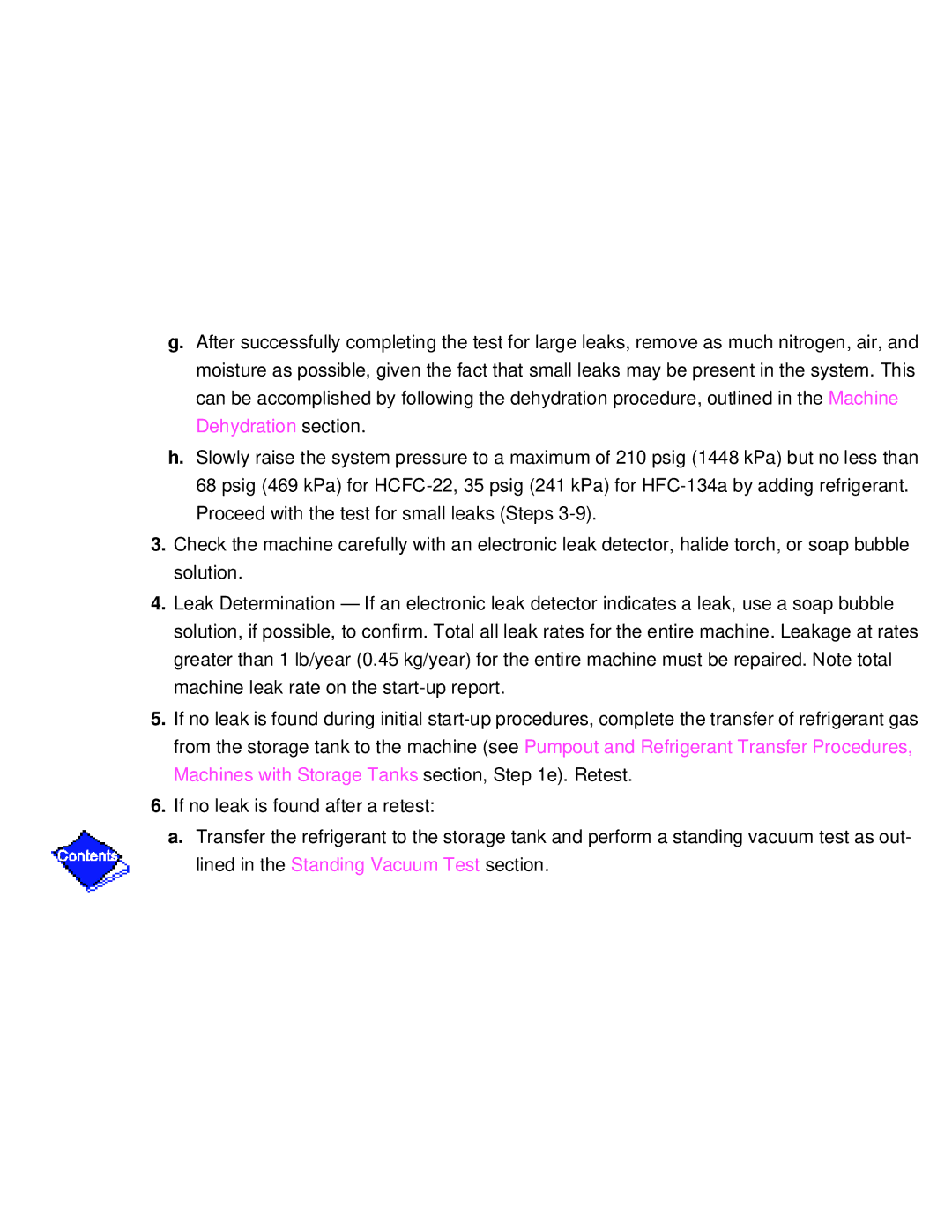
g.After successfully completing the test for large leaks, remove as much nitrogen, air, and moisture as possible, given the fact that small leaks may be present in the system. This can be accomplished by following the dehydration procedure, outlined in the Machine Dehydration section.
h.Slowly raise the system pressure to a maximum of 210 psig (1448 kPa) but no less than 68 psig (469 kPa) for
3.Check the machine carefully with an electronic leak detector, halide torch, or soap bubble solution.
4.Leak Determination — If an electronic leak detector indicates a leak, use a soap bubble solution, if possible, to confirm. Total all leak rates for the entire machine. Leakage at rates greater than 1 lb/year (0.45 kg/year) for the entire machine must be repaired. Note total machine leak rate on the
5.If no leak is found during initial
6.If no leak is found after a retest:
a.Transfer the refrigerant to the storage tank and perform a standing vacuum test as out- lined in the Standing Vacuum Test section.
